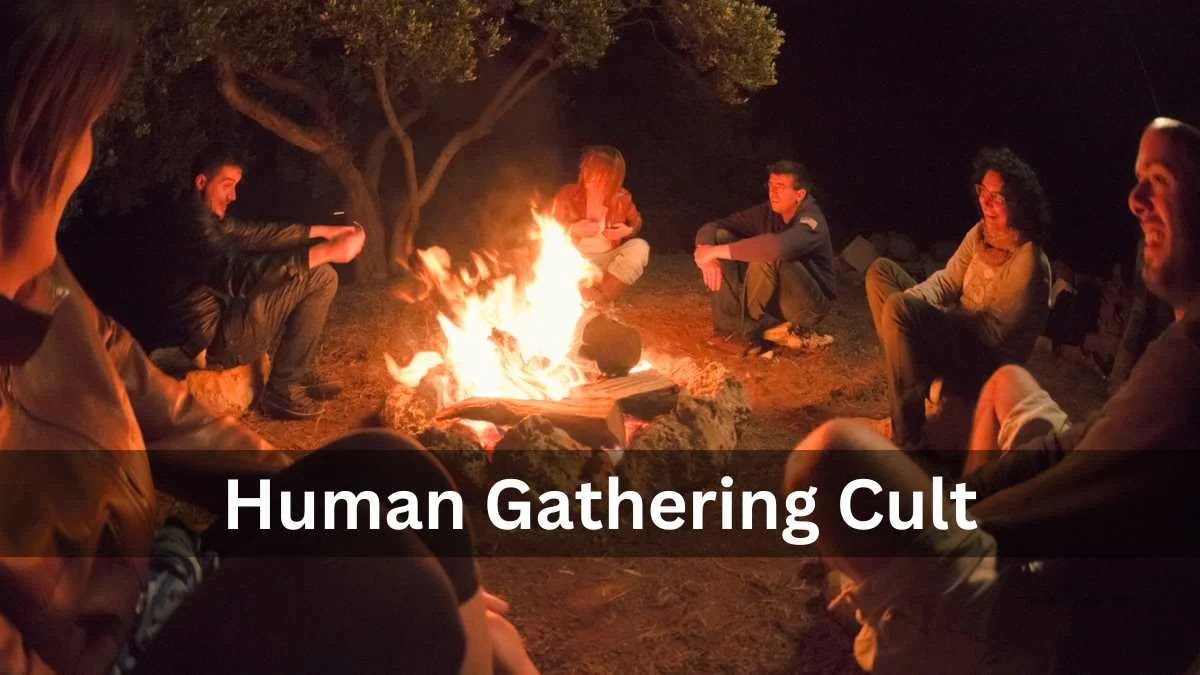Have you ever felt an intense longing for community and connection? In a world where social media often replaces face-to-face interactions, it’s no surprise that some people are drawn to groups that promise genuine belonging. Enter the human gathering cult—a fascinating phenomenon that’s gaining traction in various communities. These gatherings may seem harmless or even uplifting at first glance, but beneath their surface lies a complex web of beliefs and practices that can influence lives profoundly. This guide will take you through the origins, characteristics, and risks associated with human gathering cults while equipping you with tools to identify them in your own life. Discover how critical thinking plays a crucial role as we navigate this intriguing subject together!
What is the Human Gathering Cult?
A human gathering cult is often characterized by a tight-knit community that revolves around shared beliefs or experiences. These groups attract individuals seeking belonging, emotional support, or personal growth.
At first glance, they may appear as harmless social clubs focused on wellness and connection. Members participate in activities designed to foster deep relationships and communal bonding.
However, the term “cult” implies more than just a group of friends; it suggests an underlying set of doctrines that can lead to manipulation or control over its members’ lives. Often, these gatherings employ charismatic leaders who shape the group’s philosophy and dictate behavior.
The allure lies in their promise of transformation—be it spiritual awakening or self-improvement. Yet this can be a double-edged sword, making individuals vulnerable to influence without them realizing it.
History of Human Gathering Cults
Human gathering cults have a rich and varied history, often emerging in response to societal shifts. They can be traced back to ancient civilizations where communal rituals provided a sense of belonging.
In the 1960s and 70s, countercultural movements sparked new forms of gathering. People sought alternative lifestyles, leading to the rise of many modern-day cults. These groups offered spiritual fulfillment while rejecting mainstream norms.
Throughout history, these gatherings have thrived during times of crisis or uncertainty. Economic downturns and social unrest often serve as fertile ground for recruitment. Charismatic leaders attract those feeling lost or isolated.
The digital age has transformed how these groups operate today. Online platforms allow them to connect with potential members globally, making their influence even more pervasive than before. As technology evolves, so does the nature of human gathering cults—adapting yet retaining core characteristics from their historical roots.
Characteristics of a Human Gathering Cult
Human gathering cults often exhibit distinct characteristics that set them apart from ordinary social groups. A strong sense of community is usually present, creating an environment where individuals feel a profound connection to one another. This camaraderie can be alluring and may pull in those seeking belonging.
Charismatic leaders frequently emerge within these groups. They often possess persuasive communication skills, drawing members into their vision or philosophy. Their influence can overshadow critical thinking among followers.
Ritualistic practices are common as well. These gatherings typically involve specific ceremonies or rites designed to foster unity and reinforce beliefs. Such rituals become crucial touchpoints for group identity.
Isolation from outside influences is another hallmark of these cults. Members might distance themselves from family or friends who challenge the group’s ideology, fostering an insular atmosphere where dissenting thoughts are unwelcome.
The Appeal of Human Gathering Cults
The allure of human gathering cults often lies in the promise of community. In a world where loneliness is rampant, these groups offer an instant sense of belonging. Members find solace among like-minded individuals who share similar beliefs and goals.
Another driving factor is the desire for purpose. Many people seek deeper meaning in their lives, and cults can present themselves as pathways to enlightenment or fulfillment. This quest for understanding draws individuals in, making them feel they are part of something greater.
Additionally, charismatic leaders play a crucial role in attracting followers. Their ability to inspire and captivate creates an emotional connection that’s hard to resist. Followers may feel empowered by their guidance, further solidifying their commitment.
Experiential activities also contribute to the appeal. Gatherings often include rituals or immersive experiences that foster strong bonds between members while reinforcing shared ideologies.
Dangers and Risks Associated with Human Gathering Cults
Human gathering cults can seem inviting, creating a sense of belonging. However, they often harbor significant dangers that lurk beneath the surface.
One primary risk is emotional manipulation. Charismatic leaders may exploit vulnerabilities, leading followers to make harmful decisions without question.
Isolation is another alarming aspect. Members might be encouraged to cut ties with family and friends. This separation deepens dependency on the group and its ideologies.
Financial exploitation frequently occurs as well. Cults often require hefty donations or fees for participation in activities or retreats, draining members’ resources over time.
Additionally, some human gathering cults may engage in illegal activities under the guise of community support. These actions put participants at legal risk and threaten their future stability.
Recognizing these dangers can help individuals protect themselves from falling into such traps while seeking connection and community.
How to Identify and Avoid Joining a Human Gathering Cult
Identifying a human gathering cult requires keen observation. Look for groups that isolate members from family and friends. This is often a red flag.
Pay attention to the language used by leaders. If they employ manipulative tactics or create an “us versus them” mentality, consider stepping back.
Be wary of any organization that demands total commitment or offers solutions to all problems without questioning their methods.
Check if the group operates on secrecy. A lack of transparency can indicate unhealthy dynamics at play.
Trust your instincts. If something feels off, it probably is. Engage with diverse viewpoints and refrain from rushing into commitments.
Educating yourself about common cult behaviors helps in maintaining awareness and detaching from potential traps set by these gatherings. Prioritize personal autonomy over belonging when exploring new communities.
The Importance of Critical Thinking in Today’s Society
Critical thinking is a vital skill in our fast-paced world. With information bombarding us from every angle, the ability to analyze and evaluate what we consume has never been more crucial.
In an era where misinformation spreads like wildfire, questioning sources becomes essential. A discerning mind can sift through noise and identify credible facts.
Moreover, critical thinking fosters open dialogue. It encourages diverse perspectives rather than echo chambers of thought. Engaging with varying viewpoints leads to richer discussions and deeper understanding.
This mindset also empowers individuals to make informed decisions. Whether navigating personal choices or societal issues, a thoughtful approach yields better outcomes.
As technology evolves rapidly, adapting requires sharp analytical skills. Embracing critical thinking equips us for challenges ahead while enhancing our overall awareness of the world around us.
Conclusion
The rise of human gathering cults reflects a deep-seated need for connection and community. As societal norms evolve, so do the ways people seek belonging. These groups can offer a sense of purpose but often come with hidden dangers.
Understanding what defines a human gathering cult is crucial. They thrive on emotional appeals and create environments where critical thinking may be suppressed. It’s essential to recognize these traits to protect oneself from potentially harmful influences.
As individuals navigate their quest for community, maintaining awareness is vital. By fostering critical thinking skills, we empower ourselves to make informed choices about whom we associate with and the ideologies we embrace.
With careful consideration and mindfulness, it’s possible to engage in healthy communities while steering clear of those that could lead us astray. The journey toward genuine connections should always prioritize safety and well-being over blind allegiance or pressure from charismatic leaders.

















